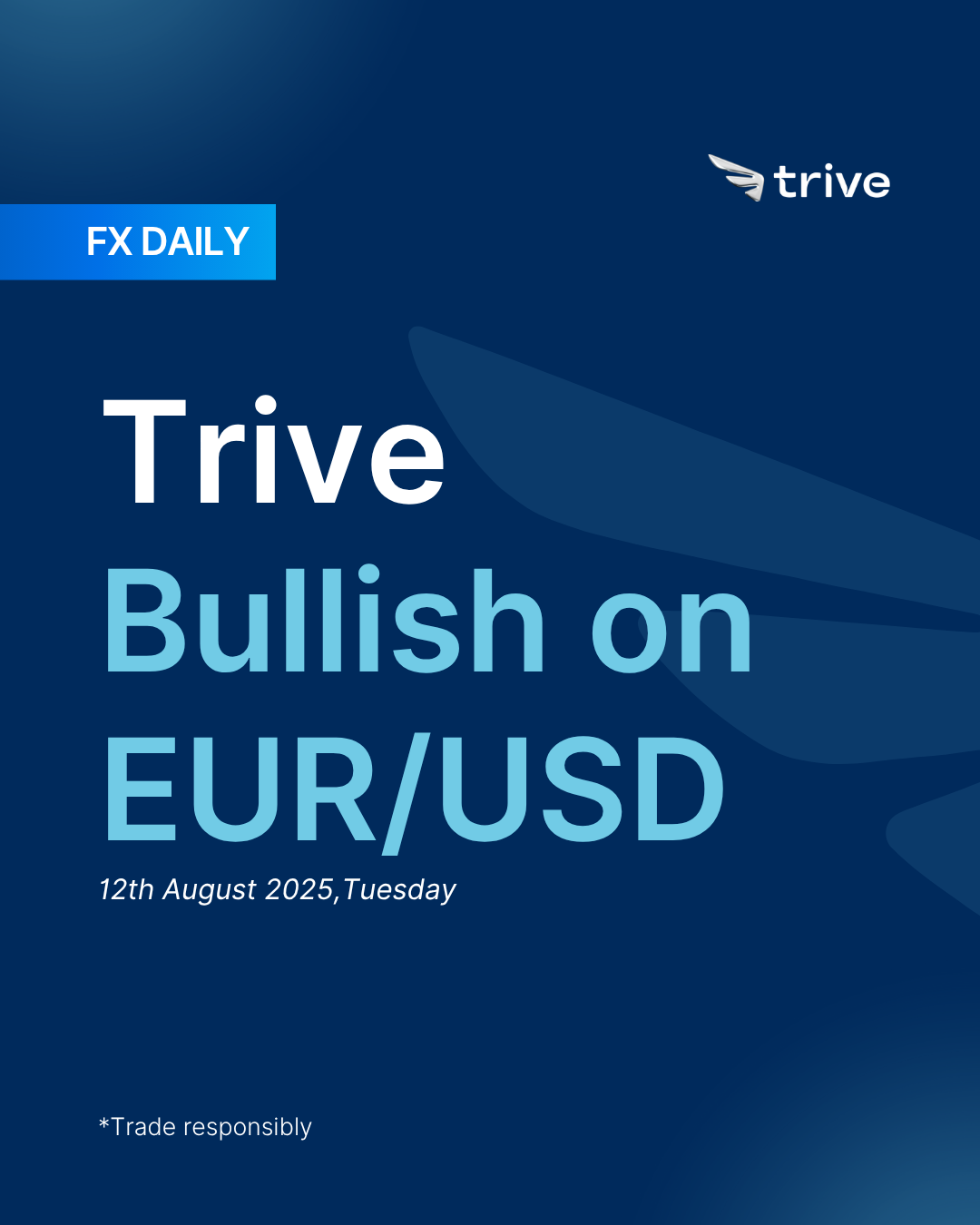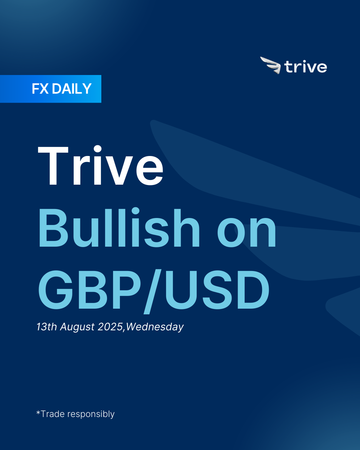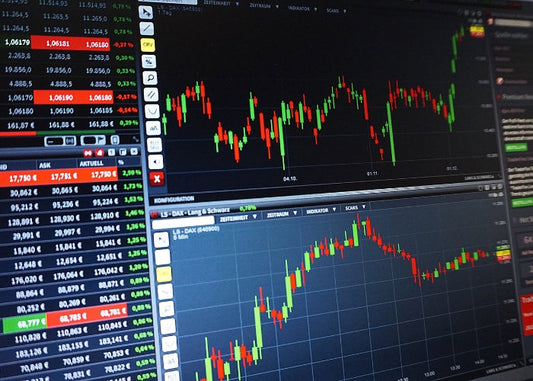FX Daily: Trive Bullish on EUR/USD

EUR/USD keeps a weak bullish bias, mainly from USD softness after weak US data and dovish Fed repricing. The pair broke its 200-day MA but stalled below 1.1700 as Euro-specific drivers stayed limited. A softer 15% EU-US tariff and sticky Eurozone inflation curbed ECB easing bets (~14bps by year-end). USD remains pressured by weak ISM/NFP, dovish Fed tone, and political influence, with markets pricing a 90% chance of a September cut (~60bps this year). Unless US CPI surprises higher, EUR/USD can edge up, but gains likely capped without stronger Eurozone catalysts.
EUR: Remain bullish bias
The Euro spent the week as a passive beneficiary of global market volatility, with its moves largely shaped by swings in the US Dollar and overall risk sentiment rather than domestic developments. EUR/USD started the week below its 200-day moving average near 1.1580, pressured by a weak Eurozone Sentix investor confidence reading, which blamed the new US-EU trade framework for dampening sentiment. The tone shifted mid-week when disappointing US ISM Services data triggered a broad dollar sell-off, pulling the Euro higher and pushing it through its 200-day moving average. The rally carried the pair toward the key 1.1700 resistance level but lacked independent momentum, stalling before the barrier. As the dollar regained some ground into the weekend, the Euro drifted lower, leaving its near-term direction dependent on geopolitical events and the upcoming US inflation report.
Trade and geopolitical factors played a role in shaping sentiment. The new EU-US trade framework sent mixed signals, with an EU official confirming the implementation of a 15% all-inclusive tariff rate while President Trump threatened a 35% tariff if unspecified investment targets were not met. This uncertainty weighed on the Euro and contributed to the weaker Sentix survey. Meanwhile, reports of progress in US-Russia talks and the possibility of a Trump-Putin meeting gave the Euro a modest boost, as de-escalation of the conflict would remove some of the geopolitical risk premium from the currency.
Economic data was mixed. Final July PMIs showed Germany’s service sector performing slightly better than expected while France’s contracted more sharply than forecast, leaving the Eurozone composite unchanged at 50.9. June retail sales in the Eurozone rose 0.3% month-on-month, and German imports surged 4.2%, hinting at some resilience in consumer and domestic demand, though not enough to drive the currency on their own.
On the policy front, the European Central Bank remained on the sidelines, with no major commentary to influence markets. Hawkish board member Robert Holzmann said rates should stay on hold and did not rule out a hike, but his remarks had little effect. Market pricing for ECB rate cuts was steady, with around 14bps of easing expected by year-end.
Overall, the Euro’s gains were primarily a function of dollar weakness following soft US data and dovish Fed developments. The failure to break above 1.1700 underscored the lack of Euro-driven momentum, keeping its upside capped for now.
As of Sunday, the markets assign an 88% probability to holding rates steady and a 12% probability to a 25‐bps rate cut by the ECB at its September 11th meeting. The interest rate path is more or less identical compared to last week, and the markets are pricing in 35‐bps of rate cuts over the next five meetings.
The US-EU trade deal wasn’t great, but it doesn’t fundamentally change the outlook for the Euro. Markets had priced in a more damaging tariff scenario, and the fact that it was limited to 15% helped avoid a deeper shock. Yes, a 15% tariff is far from ideal, but markets had braced for worse, and avoiding the more aggressive 30% scenario likely prevented deeper economic disruption in the Eurozone. The initial reaction was driven by emotion and positioning, not a fundamental reassessment of the Euro’s trajectory. What really shifted the picture was the US jobs report, which triggered a sharp Dollar selloff and forced a rethink on Fed policy.
That shift alone makes the Euro more attractive in relative terms, especially as ECB officials push back against the idea of more rate cuts. Inflation in the Eurozone is proving stickier than expected, with core and headline figures holding near the 2% target, which supports the case for policy stability. Economic growth may be slow, but it’s not collapsing, and with manufacturing PMIs stabilizing, the worst could be behind. All in all, our baseline bias remains weak bullish on the Euro.
USD: September cut?
The US Dollar fell this week, weighed down by weaker economic data and growing political pressure on the Federal Reserve. The “sell America” theme, which began after the previous week’s poor NFP report, gained momentum as the DXY struggled to hold above 99.00. This narrative was reinforced on Tuesday when the ISM Services PMI came in unexpectedly weak, with the employment sub-index falling deeper into contraction. This fueled aggressive market pricing for a September rate cut. However, the main focus quickly turned to the Fed’s leadership after President Trump announced on Thursday that CEA Chair Miran would temporarily serve as a Governor. The move was widely seen as an attempt to push for immediate rate cuts and sent the dollar to a weekly low near its 200-day moving average at 98.18. The greenback stabilized into the weekend as Treasury yields moved higher following a week of weak auctions, ending a volatile period marked by markets repricing both economic weakness and a more politicized Fed.
President Trump’s announcement of Miran’s temporary appointment to replace Governor Kugler until January 2026 was the week’s most significant event. Markets interpreted it as the addition of a dovish voice to the Fed, aimed at pressuring for near-term rate cuts. Bloomberg also reported that Fed Governor Waller had emerged as the frontrunner to become the next Fed Chair. While Waller is seen as dovish, he is also considered more of an institutionalist compared to other candidates such as Kevin Hassett, which briefly tempered the rise in bond term premium. Several Fed officials echoed the dovish tone. San Francisco Fed’s Daly said she “can’t wait forever” to act and viewed two cuts in 2025 as appropriate, with risks tilted toward more. Minneapolis Fed’s Kashkari also supported the idea of two cuts this year and stated it would be “better to cut and then hike than sit on hands.” Markets maintained strong expectations for policy easing, with the probability of a 25bps September rate cut holding above 90% and total expected cuts for the year around 58–62bps.
On the data front, the July ISM Services PMI was the most influential release of the week, dropping to 50.1 against expectations of 51.5 and sitting just above contraction. The employment sub-index fell to 46.4, reinforcing the weak labor market picture from the NFP report. Prices Paid, however, rose to 69.9. Weekly jobless claims also rose slightly, with initial claims reaching 226k and continuing claims climbing to 1.974 million. In Canada, a surprise loss of 40.8k jobs compared to expectations for a gain helped the USD recover slightly against the CAD at the week’s end.
Geopolitically, President Trump issued broad tariff threats, including the possibility of raising India’s tariffs to 50%, a 35% tariff on the EU if investment targets were not met, and a 100% tariff on imported semiconductors. Reports also suggested a possible meeting between Trump, Putin, and Zelensky in the coming week, with a potential deal to secure Russian territorial gains briefly sending oil prices lower. By Friday, Japanese officials clarified that the US would not be stacking new tariffs on top of existing ones, removing a recent point of trade tension.
Market sentiment was shaped by the view that a slowing US economy would push the Fed toward easing, which weighed on the USD while boosting risk assets such as equities. Treasury yields helped stabilize the dollar toward the end of the week, rising on Thursday and Friday after poor auction results for 3-year, 10-year, and 30-year notes, as well as possible positioning ahead of next week’s CPI release.
As of Sunday, the markets assign an 88% probability to a 25‐bps rate cut and a 12% probability to holding rates steady by the Fed at its September 17th meeting. The interest rate path is identical compared to last week, and the markets are pricing in 79‐bps of rate cuts over the next five meetings.
In our view, the recent NFP report was bad enough to mark a clear shift in sentiment for the US Dollar. The headline NFP miss was bad enough on its own, but the large downward revisions to previous months made it even harder to ignore. To us, it looks like the labor market is losing momentum faster than the Fed anticipated.
Because of that, we now see a September rate cut as the most likely outcome. The Fed had been trying to hold a more cautious tone, especially after Powell’s comments earlier in the week pushing back against rate cuts. But the data doesn’t support that stance anymore, and rate cut expectations have flipped aggressively, and we’re now looking at nearly 60bps of easing priced in by the end of the year.
We don’t believe the US economy is falling off a cliff. Wage growth is still decent, and there’s no sign of a major demand shock. But with job creation slowing and the unemployment rate edging up, the Fed has enough justification to ease in September, especially with ongoing geopolitical risks and rising tariffs starting to bite.
That said, this week brings some major data releases, including Tuesday’s CPI report. A significantly higher CPI or a significantly lower CPI could shift our outlook.
We’re sticking to our bearish baseline bias from last week.

EUR/USD 4H
Disclaimer
This material is provided for informational purposes only and does not constitute financial, investment, or other advice. The opinions expressed in this material are those of the author and do not necessarily reflect the views of Trive International. No opinion contained in this material constitutes a recommendation by Trive International or its author regarding any particular investment, transaction, or investment strategy. This material should not be relied upon in making any investment decision.
The information provided does not consider the individual investment objectives, financial situation, or needs of any specific investor. Investors should seek independent financial advice tailored to their individual circumstances before making any investment decisions. Trive International shall not be liable for any loss, damage, or injury arising directly or indirectly from the use of this information or from any action or decision taken as a result of using this material.
Trive International may or may not have a financial interest in the companies or securities mentioned. The value of investments may fluctuate, and investors may not get back the amount they originally invested. Past performance is not indicative of future results.
For more information about Trive International, please visit http://trive.com/int
Additional Information
Investing involves risk, including the potential loss of principal. Diversification and asset allocation strategies do not ensure a profit or guarantee against loss. The content in this material is subject to change without notice and may become outdated or inaccurate over time. Trive International does not undertake any obligation to update the information in this material.
By accessing this material, you acknowledge and agree to the terms of this disclaimer. If you do not agree with these terms, please refrain from using this information.
कोई टिप्पणी नहीं
Home
Trive
TriveHub





0 टिप्पणियाँ